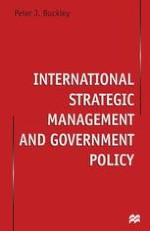1998 | OriginalPaper | Chapter
Vietnam’s Country Funds: An Emerging Investment Vehicle
Author : Nick J. Freeman
Published in: International Strategic Management and Government Policy
Publisher: Palgrave Macmillan UK
Included in: Professional Book Archive
Activate our intelligent search to find suitable subject content or patents.
Select sections of text to find matching patents with Artificial Intelligence. powered by
Select sections of text to find additional relevant content using AI-assisted search. powered by
Since the early 1980s a new form of emerging market investment vehicle has appeared on the investment scene: the listed country fund. Buoyed by the thirst for exposure to the high-growth economies of the developing world, and the rapid spate of bourses opening up across the world’s community of emerging markets, fund managers and other major portfolio investors have welcomed the introduction of country funds as a means by which to gain — relatively efficiently — investment exposure to these high-performing equity markets.1 Typically, these country funds have held a fluid portfolio of shares in listed companies of the relevant country — or, in some cases, group of countries/region — determined by the fund manager, for a fee (usually defined as a percentage of net asset value (NAV)). The country funds themselves are commonly listed (although some privately placed funds also exist), providing much-desired liquidity for investors in the funds. The perceived advantages of the country funds, as viewed by Michael T. Porter, are as follows: (1)investors gain instant, widely diversified exposure to a market;(2)lower minimum investment levels;(3)active management of the fund by people knowledgeable of the relevant market;(4)listed funds typically offer liquidity and provide the accountability demanded of the relevant bourse on which they are listed;(5)cost-effective access of often restricted markets;(6)and the potential to offer attractive discounts/premiums.2
